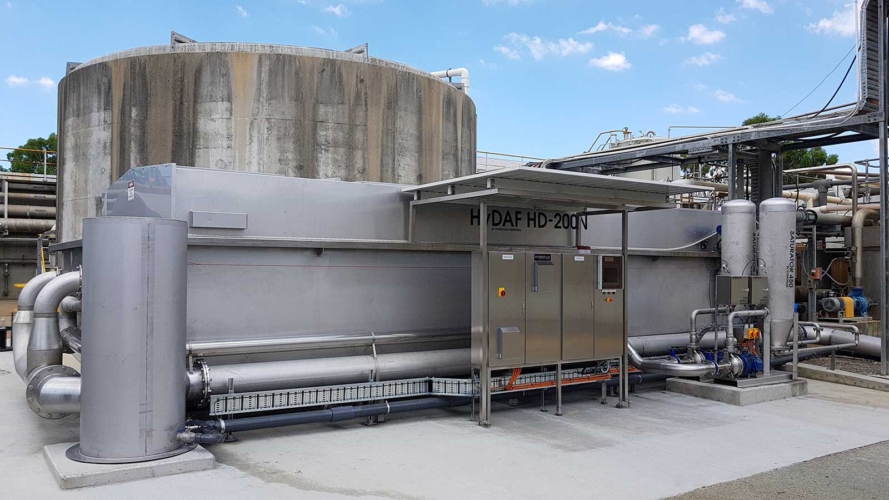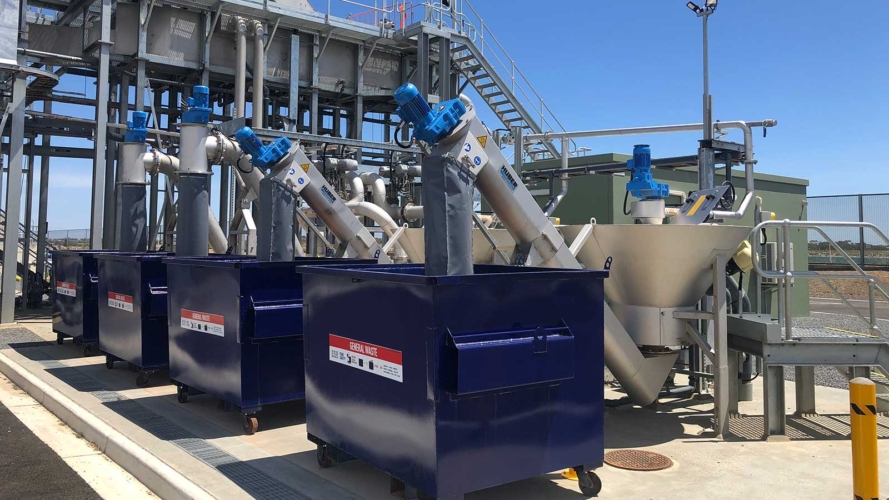Arnotts Virginia: A Benchmark in establishing MBBR technology for F&B wastewater treatment
Arnott’s, one of the oldest producers of biscuits and snacks in New South Wales, was established in the late 1800s and is best known for its famous Tim Tam brand. In 2013, the company’s Virginia factory was required to comply with more stringent sewer discharge parameters imposed and engaged Hydroflux to design and construct a turnkey wastewater treatment plant, including all civil and building works for the new facility.

The treatment plant featured primary screening followed by flow equalisation and a primary Dissolved Air Flotation (DAF) system. The primary function of the DAF system was to remove oils and suspended solids, enabling effective secondary treatment that would otherwise suffer mainly due to slowly biodegradable oils. The secondary treatment plant utilised Moving Bed Biological Reactor (MBBR) technology, designed to reduce the Biological Oxygen Demand (BOD) to less than 300 mg/L for discharge compliance while also removing virtually all solids and grease.
MBBR technology is ideal for trade waste treatment plants where only a specific amount of organics needs to be removed, allowing designs to meet discharge limits without requiring full organic conversion. This feature enables a tailored design with a low air or power consumption and generates less waste-activated sludge than other aerobic systems like MBR, SBR, or conventional activated sludge plants.

MBBR systems are also highly adaptable to changes in effluent feed concentrations, commonly found in food and beverage processing facilities, due to the very high biomass concentration that breeds on specially designed media within the biological reactor. To accommodate a flow of up to 150 kL/day, a reactor of only 80 kL was required to reduce the organic load by over 90% and achieve the desired targets.
The wastewater from the MBBR flowed into a secondary DAF system before being discharged to the sewer network. The sludge generated from the primary and secondary DAF systems was combined and dewatered using a HUBER screw press. The HUBER screw press is one of the most popular dewatering systems in Australia, with over 250 units operating across the country in both industry and municipalities. The screw press reduced the combined dry concentration from approximately 8% to over 25% representing a 3-4-fold reduction in sludge volume to be removed from site.

The project, which took approximately 12 months to complete, has consistently met discharge requirements since its commissioning in 2015. The wastewater treatment plant is often cited as a reference for various industry bodies as a prime example of effective primary and secondary treatment for food and beverage wastewater.


